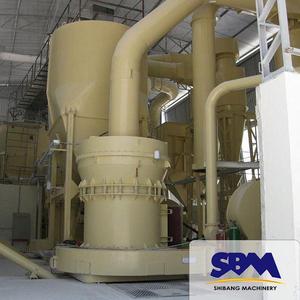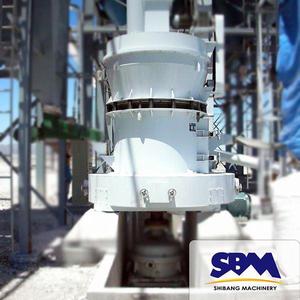
All categories
Featured selections
Trade Assurance
Buyer Central
Help Center
Get the app
Become a supplier

(157253 products available)




















Mills are used for different things, like breaking down materials. These tools help with manufacturing by allowing users to make products from raw materials. Mill factories use several custom industrial milling machines to reduce materials to small pieces, powders, or specific shapes. Here are the various kinds of mills.
A CNC mill factory uses computer controls to make precise cuts. CNC means Computer Numerical Control, which shows how the mill works. It changes the parts by making repeated exact movements. This allows for consistent and accurate production of many identical parts. CNC mills work best for large production numbers.
Horizontal and vertical mills are two basic types of milling equipment. Horizontal mills have flat cutting tools that move side to side to scrape material. Vertical mills use pointed tools that move up and down to drill into the material. Each type works better for specific milling tasks. Horizontal mills are usually best for widening material. Vertical mills work well for deep cuts and detail work. Factories often have both kinds of mills to handle diverse projects.
Lab mills are smaller and used for testing. Researchers make small batches using lab mills before mass-producing items. Lab mills help create new products or improve old ones through experimentation. After confirming results with the lab mill tests, larger factory machines are then used for full production.
A mini mill has a small motor and tool to handle light work. It is portable, small, and easy to use. A mini mill can cut, drill, or shape materials but not as quickly or heavily as larger mills. These tools are good for simple home or small business projects. Their small size makes them convenient but restricts their function to lighter tasks.
Masonry and electric mills are used for construction materials. Masonry tools break bricks, stone, and cement into smaller pieces. Electric mills use powered rotating parts to grind materials. They handle larger jobs in mill factories that deal with heavy items like concrete or big rocks.
Milling tools can be customized in various ways in a mill factory. These changes allow the mills to work better for different tasks. Here are the main parts that can be modified:
The spindle is the part that holds and rotates the cutting tool. Spindle speed refers to how fast the spindle can turn. Factories can customize spindle speeds to allow the tool to turn faster or slower based on the type of material being cut. Spindles that turn quickly enable cutters to slice through soft materials like aluminum efficiently. However, denser materials such as steel require slower speeds to prevent cutter damage. Adjusting spindle speed ensures the cutter works at the optimal level based on the job requirements.
Tool holders attach cutters to the spindle. They can be customized to hold different sized cutters. Larger cutters are needed for jobs that require making wide cuts. Smaller ones are ideal for detailed work cutting narrow grooves. Factories adjust tool holder sizes based on the cutters used in a specific project. It enables flexible usage of diverse cutters depending on the project's needs.
Mills can be customized to work with different numbers of axes. Most mills move in 3 directions, allowing them to cut in multiple angles. Some mills are upgraded to 5 axes, enabling them to slice complex shapes. Adding more axes provides more sides of the material access, which is important for intricate jobs. Customizing the number of milling machine parts enables the tool to handle simple or complex cutting tasks based on the job needs.
The worktable holds the material being cut. Customizing worktable size ensures it can hold large or small items. Larger tables are needed for huge projects. Smaller tables work well for cutting tiny pieces. Customizing the worktable allows mills to manage different project sizes effectively, whether big or small.
Sustaining manufacturing competitiveness necessitates that mill factories adapt their milling tools to present industrial market demands and the clients that they serve. Here are the common materials used in industrial milling machine customization:
Plastic materials can be easily modified into different milling machine parts. What makes plastic a go-to material for customization is its property of being lightweight. Plastic parts also come relatively cheaper than metal components.
Aluminium is among the most widely used materials for industrial milling machines. This is because of its relatively low density and corrosive resistance, making it ideal for the construction of milling machine working components, including the spindle, worktable, and tool holder.
Strong steel alloys are commonly used metals for industrial mills because steel milling tools have an extended lifespan. Steel alloys are also easily modifiable. Steel mills come with different alloyed variants, which can be changed depending on the temperature and type of products the customer intends to process.
Advanced milling machines incorporate ceramics in their customization options. Ceramics are durable enough to resist wear caused by abrasive and hard materials used in the milling process. Ceramics are ideal for the milling machine components that experience extreme heat during machining.
Conventionally, machine manufacturers avoided composite materials. However, composite materials have gradually gained popularity among certain factories due to their unique property of durability and being lightweight. Also, composite materials can be modified for some of the machine subparts that do not experience much pressure.
It is important that buyers consider and evaluate some key factors before investing in the milling machines. These factors determine the performance and optimal functioning of milling machines, hence making them ideal for specific industrial projects:
Higher spindle power is preferable since it implies that the milling machine can handle heavier and more extensive work projects. Buyers should consider the type of materials their clients will be using and choose the horsepower accordingly. For regular work, a three-horsepower mill is ideal. Heavy-duty work requires a mill spindle power of at least 10 horsepower.
Milling machine chip removal systems impact the machine's efficiency and effectiveness. Buyers should evaluate the chip removal mechanism to avoid constant machine breakdowns. Those with automatic chip removal mechanisms are easier to use compared than manual and often get missed chip removers.
Milling machines utilize coolants to reduce the heat developed during the milling and machining process. Various milling machines come with advanced coolant systems that ensure the right amount of coolant is supplied and that it is easily changeable. Buyers should look for a milling machine with a more sophisticated coolant system.
The milling machine footprint impacts the space required for installation. Buyers should purchase industrial milling machines that can easily fit in their intended working space. Floor space also affects the mobility of the machine. Although more advanced machines tend to have a larger footprint, they are often more energy-efficient and effective for industrial projects.
The ROI of the milling machine depends on the factory's production needs, the quality, and the price of the milling machine. Although large-scale projects require bigger machines, they often produce more work per hour. The ROI also depends on the complexity of the projects and the software and customization used in developing the milling machine.
Buyers should consider the following maintenance tips to ensure the industrial milling machines last long and work normally:
Milling machine lubricants should be checked periodically and even replaced when it gets used up. Insufficient or stale lubrication increases wear and tear, which reduces the longevity of the machine. More importantly, buyers should use the right type of lubricant for the specific milling machine model.
The industrial milling machine components tend to shift position from time to time due to constant usage. Buyers should regularly check if the machine's components are aligned with each other. Misalignment reduces the quality of the end product and can even damage some machine components.
Excess humidity, especially in the atmosphere, tends to corrode milling machine components. Buyers should consider storing the machine in a controlled room where humidity is regulated. Furthermore, regular assessment of the machine for signs of rust helps maintain it in good condition for a longer period.
The rotating parts of the milling machine should be balanced to ensure smooth operation. Unbalanced rotating shafts not only reduce work efficiency but also increase wear and tear, causing the machine to require constant repairs. Therefore, regular inspections and balancing of the shafts are necessary to keep the milling machine in good condition.
The worktable is affected by the material that is processed. Therefore, buyers should consider leveling the worktable from time to time. This ensures the end products are of a better quality and that the table lives longer without constant repairs.
Industrial milling machines are used in various industries to handle large-scale projects, such as manufacturing automotive and aerospace parts, medical devices, industrial machinery components, electronics casings and heat sinks, and consumer goods like appliances and tools.
Although larger machines have a bigger spindle and may be able to support larger tooling, which is needed when performing heavy-duty tasks, they do not necessarily have a higher horsepower. The milling machine-type and the brand influence the power range.
The main difference lies in the materials they are designed to mill. Electric mills are suitable for milling soft materials, while masonry consists of hard materials like stones, bricks, and concrete.
There are plenty of milling machines customization options. Some of the cutting tool holders, spindle speed, worktable size, and axis options.